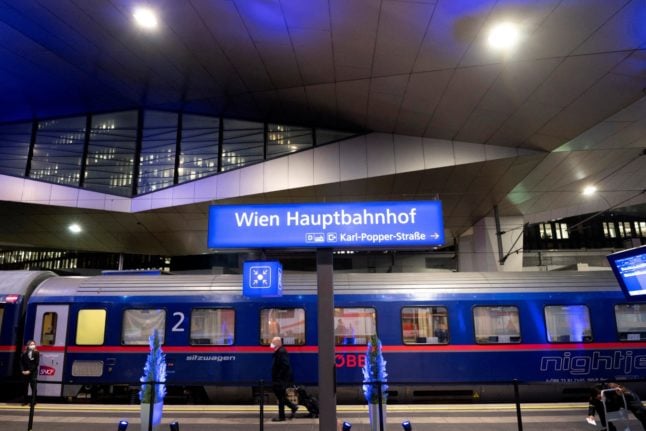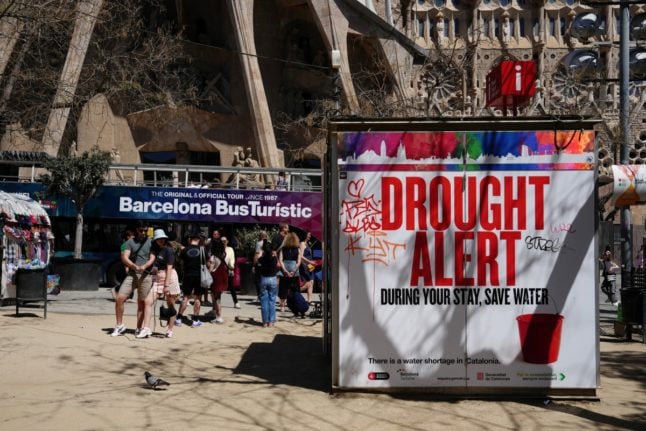If you’re a fan of so-called ‘slow tourism’, are worried about your carbon footprint, or just prefer train travel as opposed to flying everywhere, the coming year will offer some rather significant opportunities for you to travel around Europe.
In fact, 2024 is set to be a bumper year for railways around the continent, with a whole host of new, reintroduced or extended intra-European routes set to be launched, shortening journey times and opening up new travel possibilities.
READ ALSO: The domestic flights in Spain that could be cancelled to reduce emissions
Mark Smith, a former railway worker in the UK and widely accepted as the man in the know when it comes to all things train travel around Europe, has outlined some of the major changes to be aware of on his X/Twitter account.
For the train lovers among us, his website seat61.com is an near-encyclopaedic source of information if you’re trying to go between European cities using the railways. Here are the most significant changes to train routes and timetables around Europe as we head into 2024.
READ ALSO: EXPLAINED: How Austria will expand train services in new timetable
The new ‘Nightjet sleeper’
2024 will see a new Nightjet sleeper service between Brussels-Berlin & Paris-Berlin operate 3 times a week from December 10th 2023, and will become a daily service from October 2024.
This provides a key east-west link, and will help with connecting journeys from Paris, London, and Brussels to Berlin, Warsaw, Krakow & Prague.
2. The European Sleeper (Brussels/Amsterdam>Berlin 3 times a week) will be extended to Dresden & Prague from 25 March 2025. However, it will usually only run twice a week from 7 Nov 2023 to 24 March 2024. https://t.co/aQR28iKaJE pic.twitter.com/nUoTUbuouG
— The Man in Seat 61 (@seatsixtyone) October 27, 2023
From December (of this year) the Nightjet will depart from Paris Gare de l’Est at 19:12 on Tuesdays, Thursdays & Saturdays, arriving at Berlin Hauptbahnhof at 08:26.
The service will be operated by Austrian rail operator ÖBB, and according to Seat6, and the new (or rather, reintroduced) route will use an “air-conditioned Comfortline sleeping-car with nine 1, 2 & 3-berth standard compartments with washbasin and three 1, 2 or 3-berth deluxe compartments with shower & toilet.”
Shared toilet and shower facilities can be found at the end of the corridor for passengers in non-deluxe compartments. Refreshments and breakfast will be served, and fares will start at €49.90 in 6-berth couchettes, €59.90 in 4-berth couchettes, €89.90 in a 3-bed sleeper, €109.90 in a 2-bed sleeper or €159.90 in a single-bed sleeper, all per person per berth, according to Seat61.
European Sleeper
The European Sleeper, which runs between Brussels/Amsterdam to Berlin, will be extended to Dresden & Prague from 25 March 2025. For the existing routes, prices for Brussels, Antwerp, Rotterdam or Amsterdam to Berlin by sleeper are:
From €49 in a seat, €79 with a couchette in 6-berth, €99 with a bed in 4-berth. From €109 with a bed in 3-bed sleeper, €129 with a bed in 2-bed sleeper, €159 with a bed in single-bed sleeper.
READ ALSO: What’s it like driving from Scandinavia to the UK with a young family?
Krakow connections
From December 10th 2023 there’ll be two Berlin-Krakow trains running, and there’ll be another new train to Krakow from Vienna. As Mark Smith at Seat 61 says, this Berlin-Krakow link opens up a number of new journeys. Brussels or Amsterdam to Krakow, for example, will become possible in a day.
Berlin to Krakow services will be run by EuroCity train, leaving Berlin Hauptbahnhof 16:52 and arriving at Wroclaw 20:53, Katowice 23:03 & Krakow Glowny 23:54.
4. There's another new train to Krakow, from Vienna: Vienna Hbf depart 16:10, Krakow Glowny arrive 21:34. That opens up more journey opportunities too, for example Zurich to Krakow in a day with 1 robust change in Vienna, via the scenic Arlberg Pass, https://t.co/kfDbuUxFWV pic.twitter.com/YDCERwaqQE
— The Man in Seat 61 (@seatsixtyone) October 27, 2023
READ ALSO: What’s the latest on the rollout of the EU’s new ETIAS and EES travel rules?
There will also be a new train from Krakow to Vienna Hbf, departing 16:10 and arriving in Vienna at 21:34.
A second Vienna-Berlin-Hamburg ICE service will also begin in 2024, and the Warsaw-Vienna sleeper Chopin, currently also running to Graz, will be extended to Salzburg & Munich.
Seat61 says that a knock-on effect of the Brussels-Vienna Nightjet being combined with the Paris-Vienna one is that it will now cover Munich Ost & Salzburg en route (it currently goes via Nuremberg and Passau), so these two major destinations will be linked to Brussels in 2024.
7. A positive side-effect of the Brussels-Vienna Nightjet being combined with the Paris-Vienna one is that it'll serve Munich Ost & Salzburg en route (it currently goes via Nuremberg+Passau), so these two major destinations will be linked to Brussels by direct sleeper. pic.twitter.com/Nxbizx0Biw
— The Man in Seat 61 (@seatsixtyone) October 27, 2023
Nightjet
The brand new Nightjet trains will go into service on Hamburg-Vienna & Hamburg-Innsbruck lines next year, with more routes to follow throughout 2024. Munich-Innsbruck-Verona EuroCity trains will start being replaced with new-gen Railjet trains starting in April 2024.
The Berlin-Vienna/Budapest sleeper will change its route in 2024, taking a more direct route to Poland through Prague.
From 2024, both Barcelona-Paris TGVs will be 1 hour earlier.




 Please whitelist us to continue reading.
Please whitelist us to continue reading.
Very cool.